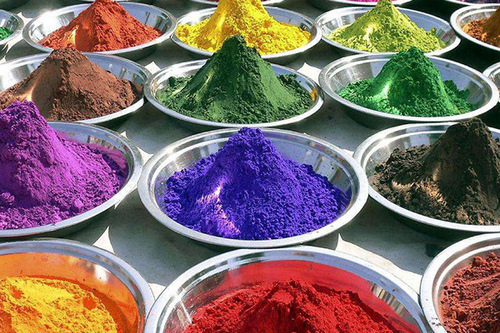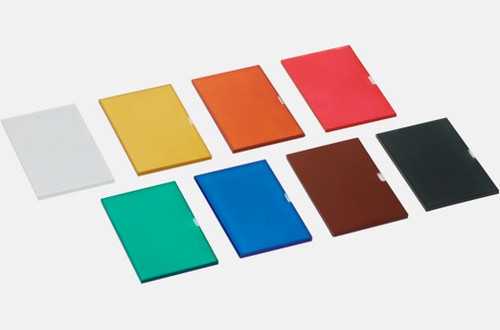As a professional pigment powder supplier, we are pleased to share that our pigment products are primarily designed for use in paints and coatings. Coatings are engineering materials applied to the surface of objects to provide decoration and protection. Historically, coatings were made from natural oils and resins, hence the term “paint.” Modern coatings, however, are typically formulated with synthetic resins. They are applied using various techniques and form strong, continuous films or layers that adhere firmly to the surface. These films provide a durable, protective coating and enhance the object’s appearance while safeguarding it from external factors.

What Is Coating
In simple terms, coating refers to any material applied to the surface of an object to protect, decorate, or impart some special property. Historically, coatings were primarily made from plant oils, which is why they were commonly called coating (or “paint”). However, modern coatings are mostly based on synthetic resins, which have largely replaced plant oils.
The shift from “paint” to “coating” reflects the change in the film-forming materials used over time. There’s no strict distinction between the two terms. Some people suggest that paints with added pigments and fillers could be referred to as paint, while any material that forms a continuous film when applied to a surface could be called a coating. This, of course, would include paint.
Essentially, the terms are often used interchangeably, but if you want to differentiate, think of paint as a subset of coatings.
There are a wide variety of coatings on the market, with over 1,000 types currently available in China alone. As industries grow and national needs evolve, new types of coatings will continue to emerge.
Classification and Composition of Coatings
Classification Of Coatings
Coatings can be categorized in many ways:
By pigment presence: They can be divided into clear coatings (varnishes) and pigmented coatings (paints).
By physical form: Coatings can be water-based, solvent-based, powder, high-solid, or solvent-free.
By usage: Coatings are developed for specific purposes, such as architectural coatings, automotive paints, aircraft skin coatings, and wood finishes.
By application method: They may be applied by spraying, dipping, baking, or through methods like electrocoating.
By process: Coatings can include primers, putties, undercoats, topcoats, and clear finishes.
By function: Some coatings are formulated for special effects like insulation, rust protection, anti-fouling, or corrosion resistance.
Each method of classification reflects a different aspect of the coating, but none fully captures its overall essence. When a coating is made from a blend of multiple resins, it is typically classified based on the dominant resin in the film-forming process.

Composition Of Coatings
Coatings are applied to surfaces to form a protective or decorative film. Their composition includes various components necessary for both the application process and the formation of the final film. The most important component is the film-forming substance, which is essential in every type of coating. For colored coatings, pigments are a key component. Other ingredients such as solvents and additives are included to facilitate the application process and improve performance.
Coatings Typically Consist Of Four Main Components
Film-forming materials: These are mainly resins or oils that create the continuous film adhering to the surface. They also include non-volatile active diluents that enhance the film’s adhesion and durability.
Pigments and fillers: These substances provide color and enhance the coating’s protective properties, improving resistance to corrosion and wear while also reducing production costs.
Solvents: Solvents act as a dispersing medium, turning the film-forming base into a workable liquid. They evaporate during application, leaving the solid film on the surface. While not part of the final film, solvents ease application and enhance the coating’s smoothness.
Additives: These auxiliary substances, such as drying agents, leveling agents, and anti-skinning agents, support the film-forming process and enhance durability. Though they do not form the film themselves, additives play an important role in optimizing the coating’s performance.

In China, typical coating composition ratios are:
Oils: 20%-30%
Resins: 10%-20%
Pigments and fillers: 4%-25%
Organic solvents or water: 33%-47%
Additives: 2%-5%
Film-forming substances, primarily made up of resins or oils, are the core components of coatings. These materials, along with non-volatile active diluents, ensure the coating adheres strongly to the surface and form a continuous, protective film. The film-forming materials serve as the foundation of the coating and dictate its basic properties.
Organic solvents or water act as dispersing agents that turn the film-forming base into a viscous liquid, facilitating application. Although they do not form part of the final film, these solvents improve the coating’s application and enhance certain film properties. The mixture of film-forming substances and dispersing agents is often referred to as lacquer.
Pigments and fillers, while unable to form a film by themselves, are included to provide color and improve the film’s protective and decorative properties. They also contribute to cost reduction in coating production.
Additives such as drying agents, leveling agents, anti-skinning agents, and plasticizers are auxiliary materials that enhance the application process and improve the film’s performance. Though they do not contribute to film formation, they play an important role in boosting the coating’s durability and effectiveness.





